"Eye of the Kite" against the Nazi viper
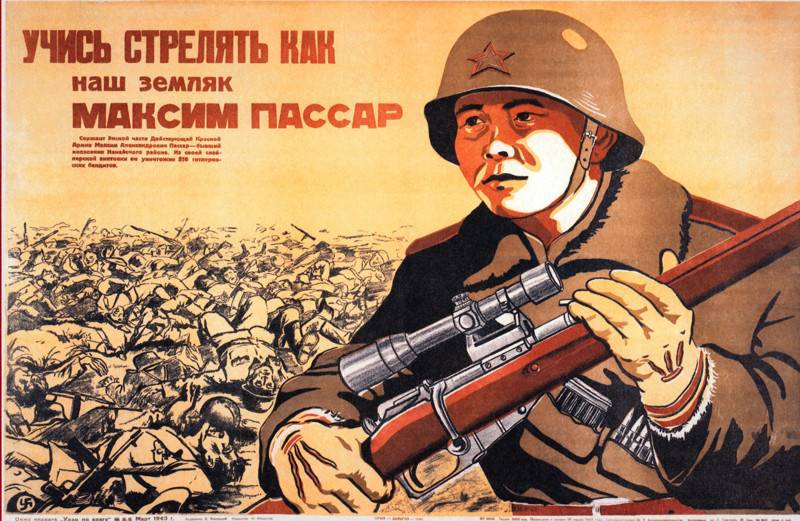
Naikhin is a Nanaian village, and the Nanais are one of the indigenous peoples of the Far East, who, according to the Constitution of the USSR 1936, were exempted from military service. The Soviet state sought to preserve the small peoples of Siberia and the Far East, some of which have only a few thousand, or even several hundred people. However, in 1939, when the foreign policy situation in the world became seriously complicated, the leadership of the USSR decided to selectively recruit representatives of small peoples of the North, Siberia and the Far East to the Red Army. When the Great Patriotic War began, locals pulled themselves to the assembly points - much more than they expected at the military registration and enlistment offices.
In the village of Naikhin there is a hero - Maxim Aleksandrovich Passar. He was born in the village of Nizhny Qatar in the year 1923, and in Naikhin he attended school since 1933. In February 1942, 18-year-old Maxim Passar volunteered for the front. Like many other representatives of the peoples of Siberia and the Far East, he became a sniper - the natural data and the inherited hunting skills played a role. Since July 1942, Maxim Passar served in the 117 Rifle Regiment of the 23 Rifle Division. He took part in the legendary Battle of Stalingrad, becoming one of the most successful snipers of Stalingrad.
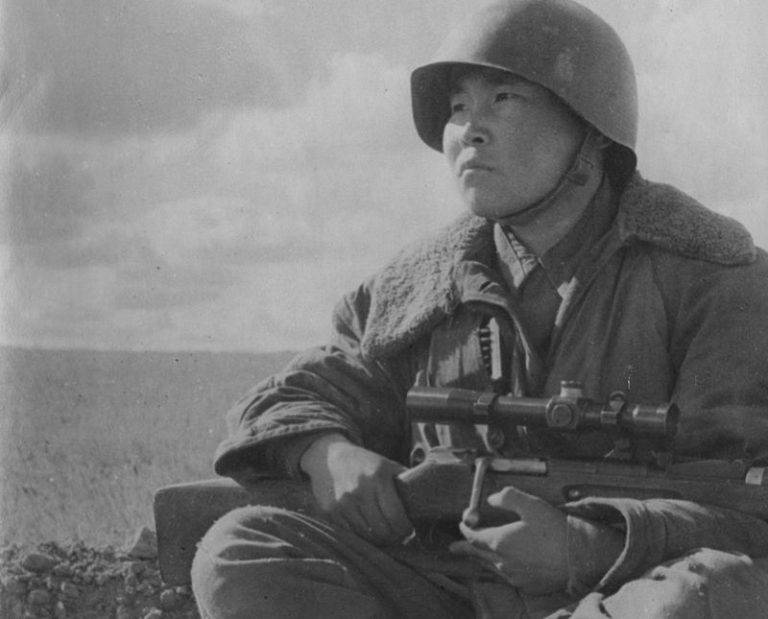
From his rifle, Maxim Passar destroyed more than 200 German soldiers and officers. For the head of the Nanai guy, the Hitlerite command even appointed an award in 100 to thousands of Reichsmarks. But Passar continued to beat the Nazis. He managed not only to fight, but also to prepare new snipers. 22 January 1943 of the year in battle near the village of Peschanka, Gorodishchensky district of the Stalingrad region 19-year-old corporal Maxim Passar destroyed two enemy machine gun calculations, but he himself died during the attack. But the deserved Golden Star of Hero Maxim was given only in 2010 year - he became the Hero of the Russian Federation posthumously, after numerous publications in the media and appeals of fellow countrymen. The name of Maxim Passar is now the school in Naikhin.
Rod Passar enjoys fame and respect among the Nanais. According to local legend, at one time, Passarov was hired by Chinese officials to guard the Great Wall of China. Anyway, but during the Great Patriotic War all four Passarov brothers went to the front as volunteers. Maxim, the youngest of the brothers, died in the 1943 year. Fedor Passar died in the first months of the war. Pavel Passar returned crippled after being wounded during the battle for Moscow, and Ivan Passar lost both eyes in the Battle of Stalingrad and also returned to his homeland.
At Stalingrad, another famous native of the village of Naikhin, Akim Dmitrievich Samar (1916-1942), died. Akim Samar was one of the first representatives of the Soviet Nanai intelligentsia.
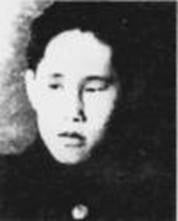 After all, until the October Revolution, practically no attention was paid to the education of representatives of the peoples of the Far East and Siberia. In 1932, 16-year-old Akim Samar graduated from a pedagogical course at the Khabarovsk Technical School of the North, then spent three years teaching at the Nikhinsky school, teaching illiteracy eradication courses, until he left Leningrad, the 1936 year, at the Institute of Northern Nations. After successfully graduating from high school, Akim Samar, the first of the “northerners,” was admitted to the Union of Writers of the USSR - he wrote poetry, showed great promise and, perhaps, would have become a true classic of the literature of the Soviet North, if not for the early death. In 1942, Akim Samar volunteered for the front. He was promoted to senior sergeant and was enlisted as deputy company commander for political affairs in the 93 (then 422) rifle division. 25 August 1942, the year Akim Samar died at Stalingrad.
After all, until the October Revolution, practically no attention was paid to the education of representatives of the peoples of the Far East and Siberia. In 1932, 16-year-old Akim Samar graduated from a pedagogical course at the Khabarovsk Technical School of the North, then spent three years teaching at the Nikhinsky school, teaching illiteracy eradication courses, until he left Leningrad, the 1936 year, at the Institute of Northern Nations. After successfully graduating from high school, Akim Samar, the first of the “northerners,” was admitted to the Union of Writers of the USSR - he wrote poetry, showed great promise and, perhaps, would have become a true classic of the literature of the Soviet North, if not for the early death. In 1942, Akim Samar volunteered for the front. He was promoted to senior sergeant and was enlisted as deputy company commander for political affairs in the 93 (then 422) rifle division. 25 August 1942, the year Akim Samar died at Stalingrad.Other representatives of the Samar clan also fought heroically on the fronts of the Great Patriotic War, from which more than 100 people went to the front as volunteers. Only one Tikhon Samar from the camp, Boktor sent seven sons to the war, and only two returned alive. From the village of Condon went to the front five sons of Mikhail Samara. They all died in the battles.
In November, 1942, near Stalingrad, killed Sergeant Alexey Samar. Like Maxim Passar, he served as a sniper in the 422 (81-th Guards) Rifle Division. Only for 20 days of fighting, Alexey Samar destroyed 190 soldiers and officers of the enemy. In total, for three months of fighting by Alexey, the 299 of the Nazis were destroyed. His brother Sniper Ivan Samar fought heroically. As part of the 96-th (68-th Guards) rifle division, fought by sniper Semyon Samar, who by the end of December destroyed 1942 more than 60 Nazi soldiers and officers. Not only Passary and Samara, but also other Nanai, Ulchi surnames sent their sons to the front, and far from all of them returned.
Among Nanai and Ulchi 8% of the total number of peoples went to the front. The small Orochi people numbered about 1941 people by the year 600. Of course, no one was going to call the Orochi into the army, but the young men and men asked for the front themselves. Only from one village of Ust-Orochi of the Vaninsky district left for the 30 front of the Orochi, 14 of which did not return from the battlefield. From the village of Bulava in the Ulchi district, 43 people went to the front, 16 people did not return. The village of Condon of the Sunny District, inhabited by the Nanaians, sent 150 people to the front, 62 of whom died.
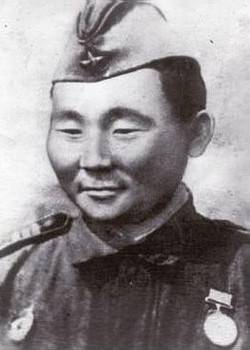 From the village of Ust-Orochi, 19-year-old Oroch went to the front Kirill Nikolayevich Batum. The hunter by profession, Kirill Batum, was credited with a sniper, and soon he received sergeant patches. More than 50 destroyed by the Nazis was on account of a very young guy from a distant Oroch village. June 27 Sergeant Kirill Batumi sniper 1943 was presented to the rank of Hero of the Soviet Union, but the higher command decided to confine himself to the Order of the Red Star. Sergeant Kirill Batum and his colleague Sergeant Potap of the Russians killed 19 on July 1943 of the year, returning from a reconnaissance mission in the German rear. They caused a fire on themselves.
From the village of Ust-Orochi, 19-year-old Oroch went to the front Kirill Nikolayevich Batum. The hunter by profession, Kirill Batum, was credited with a sniper, and soon he received sergeant patches. More than 50 destroyed by the Nazis was on account of a very young guy from a distant Oroch village. June 27 Sergeant Kirill Batumi sniper 1943 was presented to the rank of Hero of the Soviet Union, but the higher command decided to confine himself to the Order of the Red Star. Sergeant Kirill Batum and his colleague Sergeant Potap of the Russians killed 19 on July 1943 of the year, returning from a reconnaissance mission in the German rear. They caused a fire on themselves.Mostly the children of the North and the Far East went to the front by snipers, 16,5% of all the representatives of the indigenous peoples of the Amur region who served on the front were front-line intelligence. This is understandable. All of them from early childhood passed through the harsh school of taiga hunters under the guidance of their fathers or other male relatives. From the village of Ust-Nyukzha of the Tyndinsky district, they submitted applications for sending 1941 of the Amur Evenki 16 to the front in June. Many of them didn’t really speak Russian - at that time the education system in remote areas of Siberia and the Far East was not yet well-established, and in everyday life Russian was not particularly needed for hunters. After all, they saw only their relatives and deer or taiga game.
The reindeer breeder Egor Nikolaev from Ust-Nyukzhi came to the front later, in 1943 year. Almost immediately he was on the most difficult part of the front - on the Kursk Bulge. The guy who did not speak in Russian, first put on auxiliary work - to carry the wounded, on duty in the kitchen. But soon the commanders realized that Yegor was shooting very accurately. He was transferred to snipers. Nikolaev went with a rifle to Berlin. When all Yegor’s colleagues wrote their names on the walls of the Reichstag, Nikolaev could not do this - he did not know how to write. And then colleagues wrote on a piece of paper his name and surname, and Yegor redrawed the letters on the Reichstag wall. Having returned from the front, Yegor Nikolaev again became a reindeer herder, earning the Order of the Red Banner of Labor for long and conscientious work. Another Amur Evenk, sniper intelligence officer Peter Pods from Bomnak, destroyed the Nazis from his 53 rifle. Only in one of the 19 battles of December, the 1942 of the Pods "put" five Nazis. Like Nikolaev, Pods reached Berlin.
The most famous Evenk sniper is Semen Nomokonov. Evenk-Hamnigan by nationality, a native of the village of Delun (Sretensky district of the Trans-Baikal Territory), Semyon Danilovich went to the front as an elderly man. He was born in 1900 year in the family of hunters and reached excellence in hunting skills as a teenager. No wonder he was called the Eye of the Kite. He became the seed only in 15 years after baptism. In 1919, he got married, settled in a birch bark on the bank of the Urulgi River, raised children by hunting.
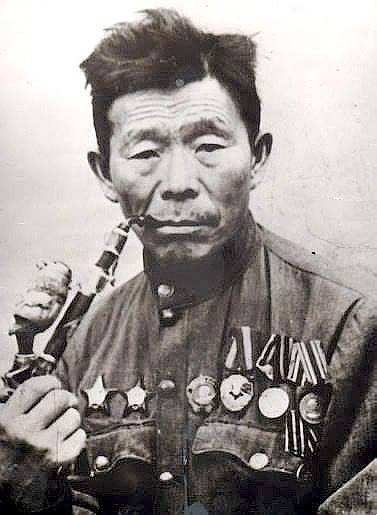
From 1928, the city of Simon Nomokonov lived in the village of Nizhny Stan of the Shilkinsky (Tungokochensky) district, worked as a carpenter, without giving up the hunt. In 1941, Semen Nomokonov went to the front. Like many other tribesmen, Nomokonov was faced with the main problem - lack of language skills. He was seconded to the hospital and identified in the kitchen - to help the chef, but soon the cook refused help from an Evenk who did not understand Russian and cut the bread incorrectly.
Soon, the hospital where Nomokonov served was surrounded. Nomokonov easily found his way into the location of the Red Army and was enrolled in a new unit. He happened to participate in the battle against the German tanks, then, after a counterattack, Nomokonov was again transferred to an auxiliary position - to the funeral team, and formally - by the sapper of the 529th rifle regiment. At the end of September 1941, he shot dead eight Germans on the Valdai Heights. Only then did the command notice that Nomokonov was a great sniper. He was enrolled in a sniper platoon under the command of Lieutenant Repin, and already in December 1941 the newspaper For the Homeland North-Western Front reported that 76 Nazi soldiers and officers were killed by sniper Nomokonov.
The number of the Hitlerites struck by the foreman Semen Nomokonov counted, burning on his pipe the dots that signified the soldiers, and the crosses that signified the officers. “Dine-Tuluguy” - a merciless war - was declared by the Evenk hunter Semyon Nomokonov to the Nazi invaders. Valdai Heights and Karelian Isthmus, Ukraine and Lithuania, East Prussia, and after the victory over Germany - Manchuria - these are the front roads of Semen Danilovich Nomokonov. According to official data, the foreman Nomokonov destroyed 368 soldiers and officers of the enemy. The Nazis called the legendary sniper "Taiga Shaman".
Eight times Nomokonov was wounded, but he survived after passing through the fronts of the Great Patriotic and Soviet-Japanese wars. In August, Nomokonov destroyed 1945 soldiers and officers of the Japanese Kwantung Army on the Trans-Baikal Front in August, receiving a nominal sniper rifle, binoculars and a horse as a reward from the command. After returning from the front, Semyon Nomokonov continued to work at the state farm, then moved to the village of Zugalay of the Mogoytuysky district of the Agin-Buryat Autonomous District, where he worked on the collective farm named after V. Lenin. Semyon Danilovich Nomokonov died on July 8 of the year 15.
However, Siberian and Far Eastern snipers were not very pleased with the Soviet command in terms of awards. Maxim Passar received the posthumous Gold Star of the Hero already in the Russian Federation, in 2010 year. Semyon Nomokonov did not become a Hero of the Soviet Union, and in 2010, when fellow countrymen tried to initiate the title of Hero of the Russian Federation to the legendary sniper, this idea was again rejected by the military department.
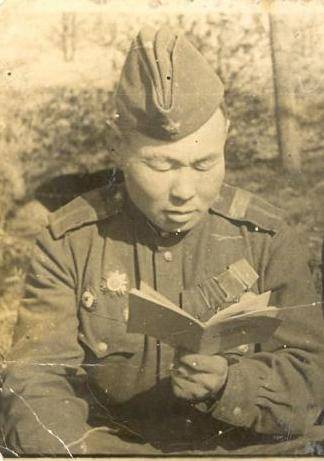 He did not become a Hero of the Soviet Union, although he twice presented himself to this high rank, Ivan Nikolaevich Kulbertinov (1917-1993). A native of Tyanya village, Olyokminsky ulus of the Yakutsk region, Ivan Kulbertin was born in the family of a hunter and reindeer herder and worked on a collective farm before the army, combining reindeer herding and hunting. In the army, Ivan was called 12 on June 1942 of the year, and on February 27 of 1943 of the year under Staraya Russa he turned the first page of his biography of the front-line sniper.
He did not become a Hero of the Soviet Union, although he twice presented himself to this high rank, Ivan Nikolaevich Kulbertinov (1917-1993). A native of Tyanya village, Olyokminsky ulus of the Yakutsk region, Ivan Kulbertin was born in the family of a hunter and reindeer herder and worked on a collective farm before the army, combining reindeer herding and hunting. In the army, Ivan was called 12 on June 1942 of the year, and on February 27 of 1943 of the year under Staraya Russa he turned the first page of his biography of the front-line sniper. Kulbertin served as a sniper of the 23 th separate ski brigade of the 7 th Guards Airborne Rifle Regiment of the 2 Th Guards Airborne Proskurov Division. He fought near Moscow, liberated Kursk and Oryol, Kiev and Vinnitsa, Poland, Czechoslovakia, Germany. On the account of Ivan Nikolaevich Kulbertinov - 487 Nazi soldiers and officers. Demobilized in 1946, Kulbertin worked as a supply worker in the Tiensky branch of the Dmitrovsky state farm, then worked as a reindeer herder and fisherman. Ivan Nikolaevich died in 1993, at the age of 76.
It would seem that Hitler Germany in no way threatened people from the Far East — the front line was on the other side of the Soviet Union. But they, hunters of taiga, deer-breeders of the tundra, fishermen of the Pacific coast went to the front, often as volunteers. After all, they considered it their duty to protect their country from the aggressor. For feats committed on the fronts of the Great Patriotic War, more than 2 thousands of representatives of the peoples of Siberia and the Far East were awarded orders and medals.
Information